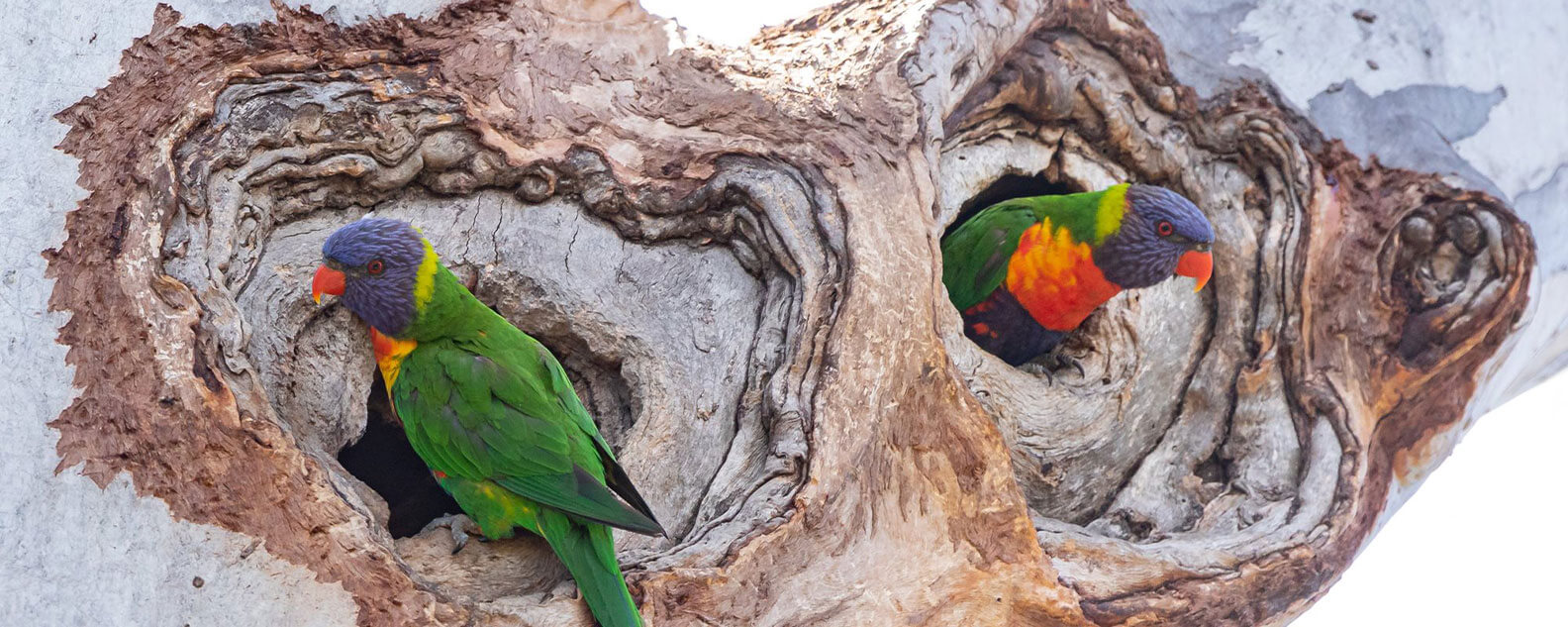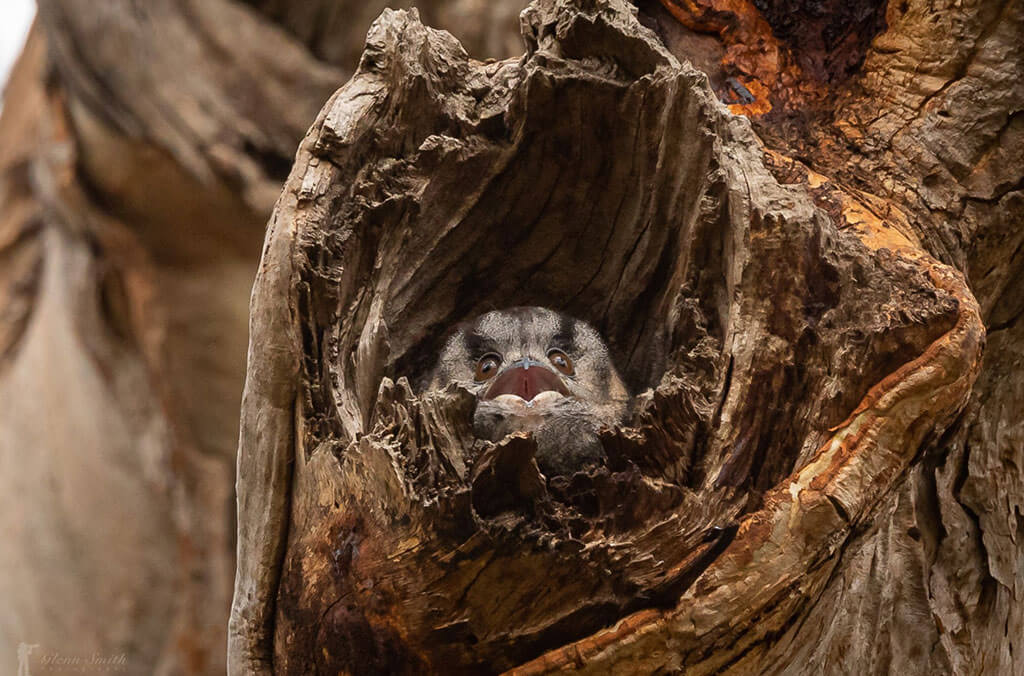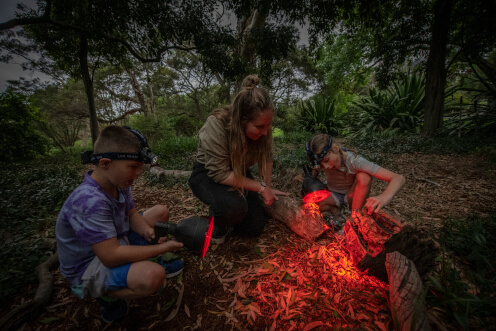Hollow Heroes
Meet Abbie Mitchel, author of A Hollow is a Home to learn the roles, adaptations and needs of tree hollow-dependent animals.

Stage 2 and 3
Geography
Science and Technology
2 hours
Minimum charges apply. Discounts apply for full day programs!
Did you know that over 340 Australian native animals call tree hollows home?
Presented by Abbie Mitchell, the author of A Hollow is a Home, this workshop will develop understanding of how an ecosystem works. Students explore the roles, adaptations and needs of an eclectic group of mammals, birds, reptiles & frogs, united in their dependence on a tree hollow.
Watch presenter Abbie Mitchell discuss her book A Hollow is a Home on the second episode of Curious Creatures, Wild Minds at Taronga. A Hollow is a Home is an excellent supporting resource for pre and post learning to this workshop, you can purchase a copy for your school here.
Please note: This is a special program run by Kids Connecting Nature and has a different format to other Botanic Gardens of Sydney excursion programs. For each 2 hour booking you will receive approximately 1.5 hours of face-to-face presentation and workshop, and approximately 30-minutes for a self-guided walk in the nearby gardens to look for tree hollows and evidence of animals. A map and other activity resources will be provided for the self-guided part of the excursion.
Students will
- View a fascinating display of items including hollows, and animal evidence (scats, tracks and traces) to stimulate curiosity and reinforce essential environmental themes
- Build a nest box for specific hollow-dependent species to be taken back to school with you (one per class)
- Explore the Garden looking for tree hollows and other evidence of animal habitats
Key content
- Describing the growth and survival of living things (diversity, needs, behaviour, interdependence and life cycles)
- Using key vocabulary to describe the unique adaptations of living things (structural and behavioural features)
- Exploring how sustainably managing environments benefits all living things.
- Responding to essential environmental themes appropriate to each stage
- Selecting appropriate materials to meet design criteria for making a nest box
Links to New South Wales curriculum
Focus Syllabus Outcomes
Geography
- Places are similar and different (GE2 – 1,2,3)
- The Earth’s environment (GE2 – 1,2,3)
- Factors that shape places (GE3 – 1,2,3)
Science
- Living world (ST2-4LW-S, ST2- 2DP-T)
- Material world (ST2-2DP-T)
- Living world (ST3-2DP-T, ST3-4LW-S)
- Material world (ST3-2DP-T)

Explore the Garden looking for tree hollows and other evidence of animal habitats.
Related excursions

Experience the Garden and its fascinating nightlife on this adventure by torchlight.

Based on Katrina Germein’s book Big Rain Coming, students will explore how First Nations people read and understand daily and seasonal weather changes and how this affects the places and environments around us.

Students will investigate a wide variety of local native plants that are integral in the life of First Nations peoples, exploring how these plants contribute to sustainability practices and the preservation of natural resources.